
2025 Mitsubishi Eclipse Cross PHEV review
The Mitsubishi Eclipse Cross was the first plug-in hybrid vehicle (PHEV) in the small SUV class, making it an especially important model in Australia as a result.
It might have been among the first auto brands to commit the sin of recycling a historically sporty nameplate for a crossover SUV, but Mitsubishi struck gold with its recipe for the Eclipse Cross.
Now the MG HS Plus EV is on hiatus as we await the arrival of its mid-sized PHEV SUV replacement, Mitsubishi is pretty much alone in offering a PHEV in the affordable SUV segments – but that doesn’t mean there isn’t more convincing competition elsewhere.
Mitsubishi’s own larger Outlander PHEV has progressed and the current generation is now a solid option, even if it is more expensive. The Eclipse Cross, meanwhile, is largely the same as it was when it launched in 2018.
It has since received a light facelift inside and out, but its interior remains very 2010.
WATCH: Paul’s video review of a 2022 Mitsubishi Eclipse Cross PHEV
There’s also a selection of gear that’s only available at the very top of the range, even though the Mitsubishi Eclipse Cross PHEV Aspire on test here is the first of two variants to cost more than $50,000 before on-road costs.
That means it’s up against tough competition from the likes of multiple non-hybrid SUVs sold by other legacy Japanese manufacturers, and it’ll likely receive a wake-up call when the next-generation MG HS PHEV arrives.
Still, plug-in hybrid SUV buyers could do a lot worse, especially when tax exemptions are considered and the price of one of these Eclipse Cross PHEVs starts to look more appealing – even if its interior does the opposite.
Is the Eclipse Cross PHEV still a good choice in today’s market, or has Mitsubishi sat on it for just a bit too long?
How much does the Mitsubishi Eclipse Cross cost?
There are three Eclipse Cross PHEV variants available to purchase right now, and the Aspire sits right in the middle.
| Model | Price before on-road costs |
|---|---|
| Mitsubishi Eclipse Cross ES FWD | $31,990 |
| Mitsubishi Eclipse Cross LS FWD | $34,740 |
| Mitsubishi Eclipse Cross LS Black Edition FWD | $35,990 |
| Mitsubishi Eclipse Cross Aspire FWD | $36,990 |
| Mitsubishi Eclipse Cross LS AWD | $37,240 |
| Mitsubishi Eclipse Cross Exceed FWD | $40,990 |
| Mitsubishi Eclipse Cross Exceed AWD | $43,490 |
| Mitsubishi Eclipse Cross PHEV ES | $47,790 |
| Mitsubishi Eclipse Cross PHEV Aspire | $51,740 |
| Mitsubishi Eclipse Cross PHEV Exceed | $56,490 |
At $51,740 plus on-roads, it’s nearly $15,000 more expensive than the front-wheel drive non-hybrid Aspire on which it’s based. But you could stand to save thousands on a novated lease for a car like this, as owners will not have to pay Fringe Benefits Tax (FBT) until April 1, 2025.
At the moment, plug-in hybrid versions of the Eclipse Cross have no direct budget rivals. That will change in mid-2025 though, when the next-generation MG HS PHEV arrives, since the outgoing HS is no longer available.
Standard Eclipse Cross models, however, have a packed list of competitors. The new petrol HS is one of them, and it ranges in price from $34,990 to $40,990 drive-away.
To see how the Mitsubishi Eclipse Cross stacks up against its rivals, use our comparison tool
What is the Mitsubishi Eclipse Cross like on the inside?
The Eclipse Cross is getting long in the tooth, and nowhere is that better demonstrated than its interior.
Being the Aspire, it benefits from some nicer cabin materials like the ‘mi-suede’ and synthetic leather upholstery found on the seats, but for the most part it’s struggling to keep up with the times.
The infotainment system leaves a lot to be desired. At 8.0 inches it’s comparatively small alongside the competition, and it pokes out of the dashboard awkwardly as if it was an afterthought, although that’s not uncommon these days.
It’s also old graphically and its resolution isn’t as crisp as we would like, but it’s at least easy to navigate. Its home screen features five large tile icons for the various menus available, while touch-capacitive buttons and two knobs are included along the screen’s bottom bezel.
We don’t mind the mix of the touchscreen and physical controls, and similar setups in other cars – Skoda in particular – are useful to keep things clear and simple. Sure, this may be another product of its age, but this is one that works.
In terms of presentation, some of the material choices are also telling of the car’s age. The hard silver plastic is one giveaway, and the faux carbon-fibre trim pieces on the central panel and door armrests were always a bit iffy.
The interior of the Eclipse Cross has hardly changed at all since the car launched, and that’s a big part of the problem. It means those who will have test driven other new cars with cleaner, screen-heavier setups may be underwhelmed, but of course there are many different buyer types.
If you’re coming from an older car, the setup of this car will feel much less alien than something like a new Hyundai Tucson, for example. That’s helped by the continued inclusion of physical controls which, as mentioned, is something that benefits useability.
Where others have shifted to effectively screen-only multimedia approaches, the Eclipse Cross still has a traditional climate control interface that is clear and easy to use.
It’s made up of an LCD display surrounded by an array of buttons, while below that you’ll find clearly marked switches and buttons for things like front seat heating and drive modes.
All the buttons are clearly labelled too, which means those unfamiliar with the car are unlikely to feel overwhelmed when jumping in for the first time. Again, its age helps make the Eclipse Cross be more approachable.
While that’s all fine, there’s still a strange mix of themes going on in here. Around the strangely shaped gear selector is loads of gloss black trim, which is then broken up by some hard, dull plastic switches for the seat heating.
More silver trim appears on the centre console too, and all of that means there’s simply too much going on. Some simplification here could go a long way for both cleaning things up and modernising its appearance.
A pet peeve is the use of more gloss black on the steering wheel, which is just a magnet for fingerprints and smudges. The rest of the wheel is leather-wrapped, but it doesn’t feel like the same quality of leather we’ve experienced in other cars.
The tiller rim feels relatively small in the hands too, which adds to the old-school feel. Even if it is based on the non-hybrid Aspire, we’d want something a bit nicer for the money.
You still get the standard steering wheel buttons for infotainment and driver assist controls, and at least they’re finished in more durable hard plastic instead of anything glossy.
Ahead of the steering wheel is a traditional two-gauge cluster, with the digital acreage limited to a smaller display in the middle. While the whole unit may be simple and a little clunky in appearance, it’s perfectly functional and easy to read.
We’ve said the infotainment screen is lacking compared to the competition, but we can’t ignore the fact you still get some useful features here. Standard on this grade of Eclipse Cross is a reversing camera, as well as a handy surround-view camera.
Neither camera may be of particularly high resolution, but we’d rather have both views even if it means sacrificing some legibility. It all helps make this car easy to live with.
A downside of the aging interior is that Apple CarPlay and Android Auto are wired only, and connect via one of two USB-A ports up front, but you’ll at least have the reliability of a hardwired link.
As such, we had no issues with smartphone mirroring during our week with the car. Other power sources are limited to the 12V outlet nearby, and unfortunately there’s no wireless phone charging pad to be found here.
Stepping into the back can be a squeeze, as the opening angle of the doors is relatively limited. There’s not a lot of room on the floor to step in either, and the door sills are wider than what you may expect.
Once you’re in though, you’ll find the rear seats are upholstered in the same suede and synthetic leather as up front, and they’re comfortable to sit in for longer periods of time. There’s loads of head and legroom, but it’s a fairly barebones experience.
The cabin presentation is actually easier to digest than it is up the front, as there’s much less variation in materials and it all stays relatively coherent. There’s none of that silver trim back here, where everything is dull-finished hard plastic.
Amenities are limited to a fold-down armrest, a USB-A and USB-C port, and that’s it. There aren’t even any rear-facing air vents, which is disappointing for anyone spending time in the rear.
The boot of the Eclipse Cross is one of its strengths. While it’s quoted as less than the smaller Volkswagen T-Roc (392L) and Nissan Qashqai (429L), you still get loads of floor space up to the second-row seatbacks.
The sharply sloped roofline does mean vertical space is compromised. The wheel-arches also eat into space either side, and the floor sits relatively high because of the storage for charging-related equipment underneath.
Being the Aspire, it also misses out on a power tailgate, which is another one of those things we think a model variant one rung down from the top of the range should feature.
At least because it’s a PHEV you do benefit from a 1500W V2L outlet, but it misses out on a spare tyre. Overall, while it may all be functional, the Eclipse Cross interior is desperately in need of a refresh, even if it’s just a minor update to keep up with the times.
| Dimensions | Mitsubishi Eclipse Cross PHEV Aspire |
|---|---|
| Length | 4545mm |
| Width | 1805mm |
| Height | 1685mm |
| Wheelbase | 2670mm |
| Cargo capacity (VDA) | 359 litres (rear seats up) 626 litres (rear seats folded) |
To see how the Mitsubishi Eclipse Cross stacks up against its rivals, use our comparison tool
What’s under the bonnet?
All Eclipse Cross PHEVs utilise a 2.4-litre naturally aspirated four-cylinder petrol engine, supported by electric motors on the front and rear axles.
| Specifications | Mitsubishi Eclipse Cross PHEV |
|---|---|
| Engine | 2.4L 4cyl petrol PHEV |
| Engine outputs | 94kW @ 4500rpm 199Nm @ 4500rpm |
| Electric motor outputs | 60kW / 137Nm (front) 70kW / 195Nm (rear) |
| Battery | 13.8kWh lithium-ion |
| Generator output | 80kW |
| Transmission | Single-speed fixed |
| Driven wheels | AWD |
| Kerb weight | 1920kg |
| Fuel economy (claimed) | 1.9L/100km |
| Fuel economy (as tested) | 4.0L/100km |
| Electric driving range (PHEV) | 55km |
| Fuel tank capacity | 45 litres |
| Fuel requirement | 91 RON |
| Braked tow capacity | 1500kg |
Our week with the car primarily involved highway driving, with some time also spent on slower roads in built-up areas.
The higher-than-claimed fuel economy figure we recorded is a result of the PHEV powertrain’s limitations, primarily its electric-only range. More on that below.
To see how the Mitsubishi Eclipse Cross stacks up against its rivals, use our comparison tool
How does the Mitsubishi Eclipse Cross drive?
The Eclipse Cross is classed as a small SUV, but it doesn’t really feel like one on the road.

PHEV Exceed pictured
Of course, it’s nowhere near as large as the Pajero Sport or even the Outlander, but the PHEV powertrain probably has a large part to play in the way this particular Eclipse Cross feels on the road.
For one, it’s more than 400kg heavier than the standard non-hybrid Aspire, which is front-wheel drive only. While this AWD PHEV doesn’t feel heavy thanks to its appropriately peppy throttle response, you do notice the extra weight being lugged around.
Its kerb weight is listed at nearly two tonnes, which for a ‘small SUV’ is nothing to sneeze at. The compromise is its handling dynamics, which we’d stop short of calling sloppy but it’s by no means nimble.
The car’s suspension is set up well enough to handle its extra mass, and at no point does the Eclipse Cross PHEV feel unwieldy. It doesn’t clatter over bumps nor wallow over softer undulations either.
It’s a solid ride/handling balance that we can’t really knock. The added weight may even help it to feel more planted than the standard Aspire, and you get the added security of all-wheel drive if you decide to head off-road or to the snow.
Of course, the the main drawcard of this car is its PHEV powertrain. While 55km of electric-only range doesn’t seem like a lot, there isn’t anything else at this price that offers the same zero-emissions driving capability – let alone more.
The Eclipse Cross’ tried-and-tested approach to plug-in tech actually works in its favour in this case.
When you consider the upcoming Ford Ranger PHEV – which of course is a much bigger, heavier and more capable vehicle – is expected to have an electric-only range of 45km and will likely be considerably more expensive, this suddenly doesn’t seem so bad.
And, to its credit, the Aspire PHEV was able to match or better its 1.9L/100km fuel economy claim in normal conditions, meaning standard urban traffic and, crucially, a fully charged battery to start with.
But once the battery goes flat – which happens surprisingly quickly if you have a longer commute – you’re relying solely on the 2.4-litre naturally aspirated engine, and consumption rises dramatically from the paltry sub-2.0L/100km claimed average.
Mitsubishi claims the 55km EV range is enough for the daily commute of most Aussies, but I have a 60km commute twice daily, so after fully charging the battery at home each night, arriving at work with a flat battery, then driving home on engine power alone, I averaged 4.0L/100km.
So even without engaging the handy electric vehicle (EV)-only mode, the battery still won’t be able to last a full day’s driving for me and therefore this PHEV won’t be as efficient as it can be.
That makes it less suited to longer-distance commuters, but 4.0L/100km is still more efficient than the Toyota Corolla Cross hybrid and the Nissan Qashqai E-Power. And unlike an EV, the Eclipse Cross won’t leave you stranded when its battery is depleted, making its longer total range well suited to many Aussies.
Of course, Mitsubishi could increase the range of the Eclipse Cross PHEV, but that would also drive up its price. Instead, it’s worth remembering this car is still incoporates previous-generation Mitsubishi PHEV tech, which makes it a reliable setup that’s comfortably under-budget for most PHEVs.
It’s also currently unique in the market until the new MG HS plug-in hybrid arrives. The MG will have the advantage of being a bigger new PHEV with an up-to-date interior, but that doesn’t mean the Eclipse Cross PHEV should be overlooked.
Rivals from brands like BYD and even Mitsubishi’s own Outlander PHEV have EV ranges of more than 80km, but they’re much more expensive.
If you do go for the Eclipse Cross PHEV and your commute is as long as mine, and you can plug in your car when you get to your destination, you might spend a lot more time charging but you’ll also spend very little on fuel and almost all your driving in EV mode.
And if your each-way commute is less than about 25km, all your driving will be in EV mode and you’ll pay off this PHEV’s price premium a lot more quickly.
If, on the other hand, your commute is longer than 55km and, like most people, you can’t be bothered recharging your PHEV regularly, then you might as well get a non-hybrid Eclipse Cross.
On its own then, the Eclipse Cross PHEV is a good choice if you have a shorter daily commute. The fact it’s produced by an established carmaker with a solid – albeit uninspiring – track record with such tech also improves buyer confidence, as does Mitsubishi’s conditional 10-year warranty.
As you may have deduced from our thoughts on its interior, the issues with this car don’t relate to the PHEV powertrain but its outdated presentation as a whole.
Its age is also evidenced by the standard safety tech. Being the higher-spec Aspire, you do benefit from adaptive cruise control and a surround-view camera, as well as rear cross-traffic alert and blind spot monitoring, which isn’t available in the entry-level Eclipse Cross.
But Mitsubishi’s clever Ultrasonic Misacceleration Mitigation System, which stops the car when it detects the accelerator has been pressed instead of the brake pedal at low speeds, is only found in the top-spec Exceed.
It’s also worth remembering the Aspire PHEV is roughly $15,000 more expensive than the non-hybrid Aspire, which gets all the same equipment. The only real difference is the petrol version has no electric motors and therefore uses more fuel, and it’s front-wheel drive only.
Petrol-only or PHEV, the Eclipse Cross thrives in urban areas. It’s easy to manoeuvre thanks to its well weighted steering feel, which isn’t as light as in some of its competitors.
Visibility out the windows is also good, with rear-view visiion not compromised despite the sharply angled rear window. Blind spot monitoring and front parking sensors are welcome additions that help in navigating tight streets and carparks.
All that means the Aspire PHEV’s on-road experience is largely misaligned with its aged interior presentation, which is one of the reasons it’s relatively good value.
To see how the Mitsubishi Eclipse Cross stacks up against its rivals, use our comparison tool
What do you get?
There are four distinct grades of Eclipse Cross, with the Aspire tested here sitting second from the top of the range. The PHEV version gains a series of tweaks over its non-hybrid counterpart.
Eclipse Cross ES equipment highlights:
- 16-inch alloy wheels
- LED daytime running lights
- Automatic headlights
- Rear LED fog lamp
- Soundproof windshield glass
- Rain-sensing wipers
- Black fabric upholstery
- Climate control air-conditioning
- 8.0-inch touchscreen infotainment system
- Wired Android Auto and Apple CarPlay
- 4-speaker sound system
- Tilt and telescopic steering column adjustment
- Cruise control
- Keyless entry
Eclipse Cross ES PHEV adds:
- Illuminated front door trim
- Leather-wrapped steering wheel
- Rear centre armrest with cupholders
- Electric park brake
- Mode 2 charging cable
- Mode 3 charging cable
- Acoustic vehicle alert system
Eclipse Cross LS adds (over ES):
- 18-inch alloy wheels
- LED front fog lights
- Automatic high-beam
- Privacy glass
- Power-folding exterior mirrors
- Electric park brake with auto hold
- 6-speaker sound system
- Rear USB-A and USB-C outlets
- Electrochromatic rear-view mirror
Eclipse Cross LS Black Edition adds:
- Black 18-inch alloy wheels
- Gloss black mirrors, skid plates
- Mi-suede and synthetic leather upholstery
- Black dimpled leather-wrapped steering wheel with grey stitching
- Black headliner, pillar trims
- 4-way power driver’s seat
- Heated front seats
- PVC leather door cards
- Grey stitching details
- Silver garnishes on instrument panel, centre console sides, door grips
Eclipse Cross Aspire variants gain (over LS):
- Gloss black front and rear skid plates
- Black grille
- Mi-suede and synthetic leather upholstery
- Dual-zone climate control
- 8-speaker sound system with 4 tweeters
- 4-way power driver’s seat
- Heated front seats
Eclipse Cross Aspire PHEV adds:
- Automatic LED headlights
- Roof rails
- Silver front lower bumper
- Black front bumper centre garnish
- Black grille insert
- Black and insert rear lower bumper
- Black side door garnish
- 1500-watt V2L capacity
To see how the Mitsubishi Eclipse Cross stacks up against its rivals, use our comparison tool
Is the Mitsubishi Eclipse Cross safe?
As of January 2024, the Mitsubishi Eclipse Cross is ‘unrated’ by ANCAP, with its five-star safety rating – awarded in 2017 – stripped due to the organisation’s six-year expiry policy.
Standard safety equipment across the range includes:
- 7 airbags
- AEB with pedestrian detection
- Reversing camera
- Rear parking sensors
- Lane departure warning
LS and above get:
- Blind-spot monitoring
- Rear cross-traffic alert
Aspire and above get:
- Adaptive cruise control
- Front parking sensors
- Surround-view camera
Exceed and Exceed PHEV receive Mitsubishi’s Ultrasonic Misacceleration Mitigation System, which is designed to stop the car when it detects the accelerator has been pressed instead of the brake at low speeds.
To see how the Mitsubishi Eclipse Cross stacks up against its rivals, use our comparison tool
How much does the Mitsubishi Eclipse Cross cost to run?
Mitsubishi backs its Eclipse Cross with a 10-year, 200,000km warranty if you service at a Mitsubishi dealer (if not it’s five years and 100,000km), and its PHEV models are covered by an eight year, 160,000km battery warranty.
| Servicing and Warranty | Mitsubishi Eclipse Cross PHEV |
|---|---|
| Warranty | 10 years or 200,000km |
| Battery warranty | 8 years or 160,000km |
| Roadside assistance | Up to 10 years (12 months free, then service-activated) |
| Service intervals | 12 months or 15,000 kilometres |
| Capped price servicing | Up to 10 years |
| Total capped price service cost | $5940 – 10 years |
Servicing intervals are 12 months or 15,000km, whichever comes first. The total price for capped-price servicing over 10 years is exactly $1000 cheaper for petrol models compared to PHEVs.
To see how the Mitsubishi Eclipse Cross stacks up against its rivals, use our comparison tool
CarExpert’s Take on the Mitsubishi Eclipse Cross PHEV Aspire
Fundamentally, this is a solid small SUV that can comfortably get the job done, but it’s incredibly outdated.
Apart from its comparatively short EV range, the Eclipse Cross doesn’t do a lot wrong when you’re on the move. And there are really no other small PHEV SUVs available at this price point, which is a compelling case on its own.
Its dynamics are predictable and user-friendly, and there’s no unnecessary safety tech to annoy you. It’s easy to park and manoeuvre, and has enough space inside to comfortably transport a handful of passengers and their luggage – or a large load of groceries.
In its natural urban environment it’s also more economical than comparable small plugless hybrid SUVs, and if you have a short commute and keep its battery charged you’ll quicky pay off the purchase price premium and start saving big money on fuel bills.
We like that it can be locked in EV mode up to a certain speed, and naturally the e-motors contribute to the Eclipse Cross’ ability to quickly get going.
The car’s ageing design results in a largely analogue driving experience that some buyers may appreciate, but it comes at the detriment of its interior.
The Eclipse Cross isn’t the worst offender in this area on sale right now, given other Mitsubishis like the ASX are arguably more outdated, but it’s hard for us to rally around the way this car presents.
There are too many different materials including that tacky faux carbon-fibre, while most of the interior is draped in uninviting hard plastic. Its cabin tech is functional, but the omission of wireless smartphone mirroring continues to be disappointing… but not surprising.
That’s a shame, because a well-considered interior update would go a long way to addressing one of our only complaints here, especially given the exterior doesn’t look bad and it drives as well as it does.
As a budget-friendly alternative to larger, more expensive PHEVs, the Eclipse Cross does the job well and the Aspire version is probably the pick of the bunch. But once the larger yet similarly priced MG HS PHEV arrives, we expect Mitsubishi will have to pull its socks up.
Interested in buying a Mitsubishi Eclipse Cross? Get in touch with one of CarExpert’s trusted dealers here
Click the images for the full gallery
MORE: Everything Mitsubishi Eclipse Cross







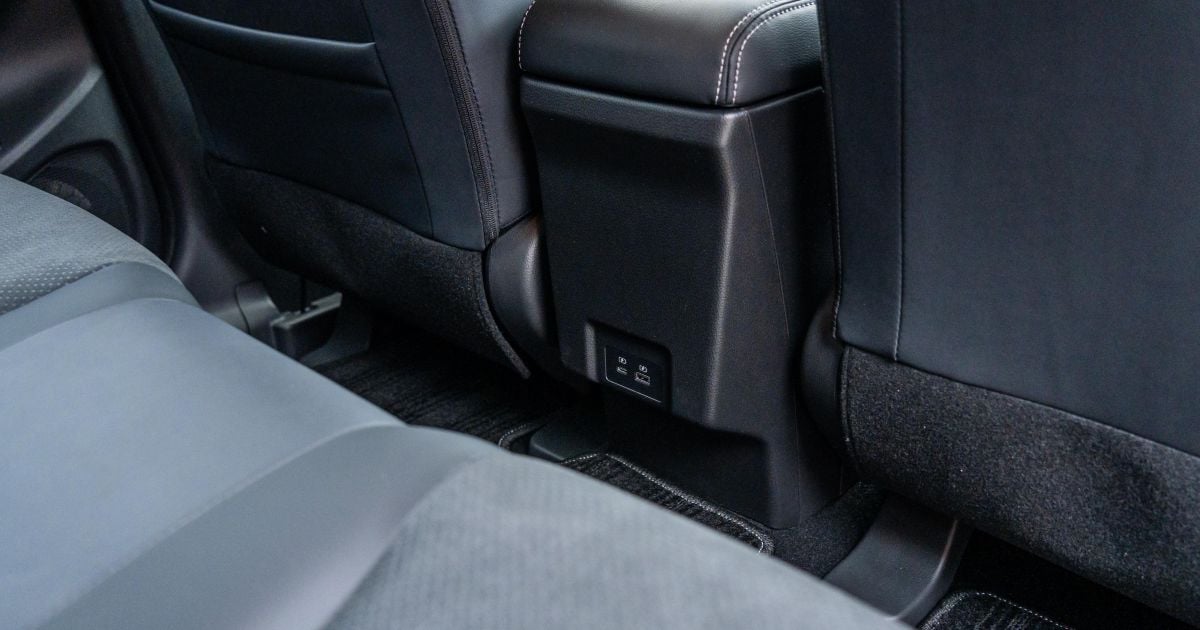







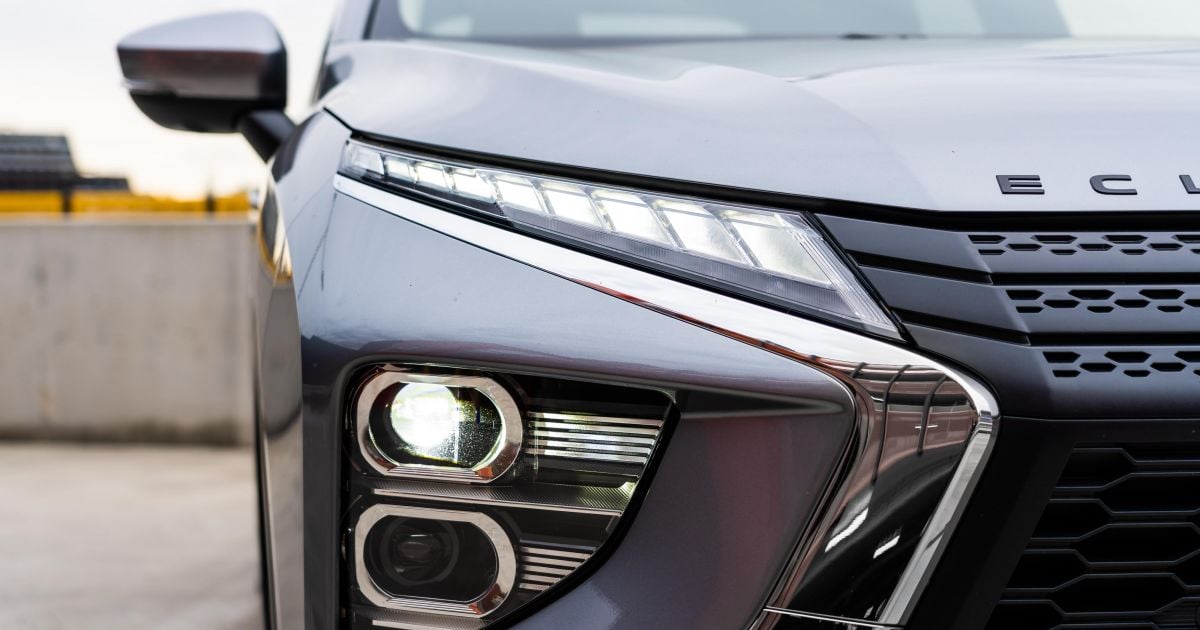






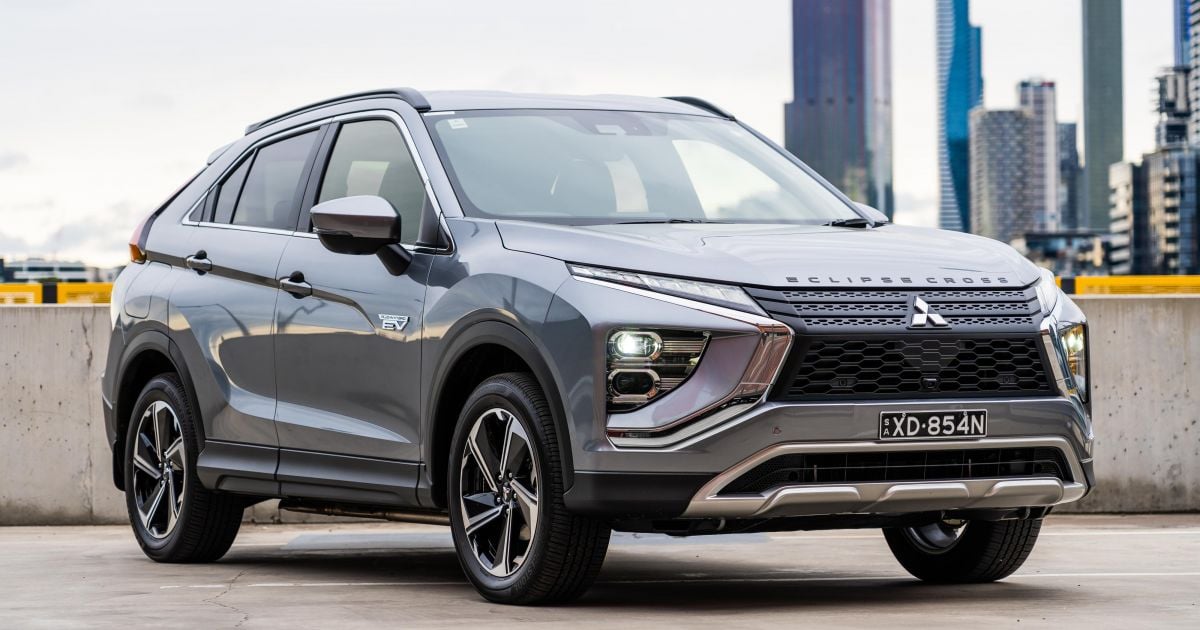
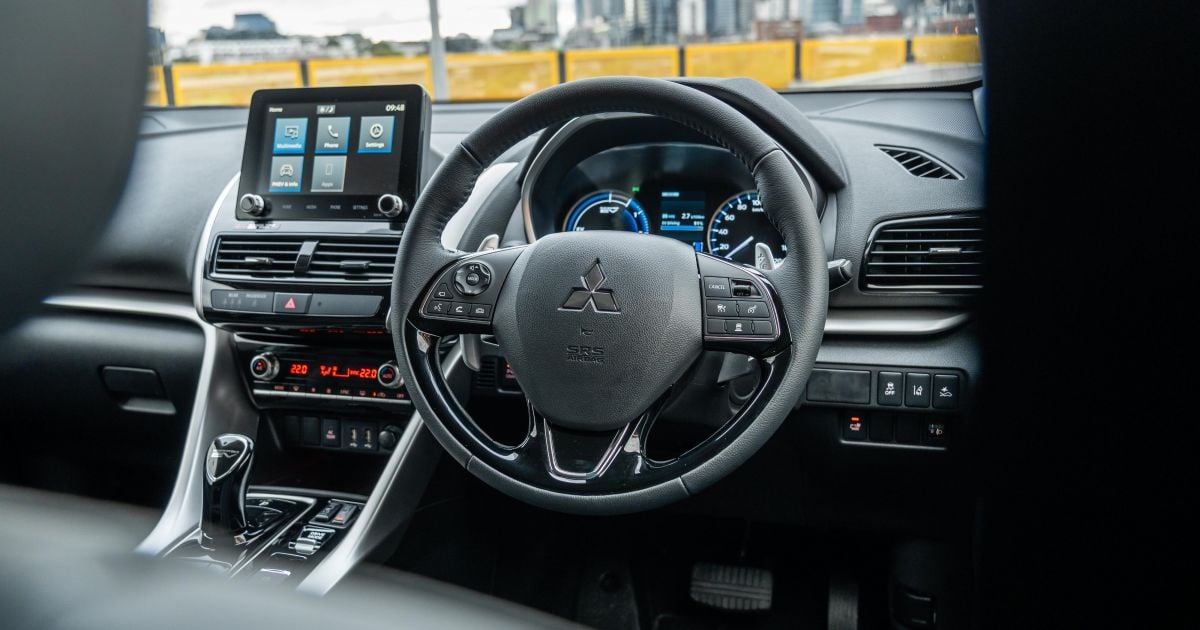
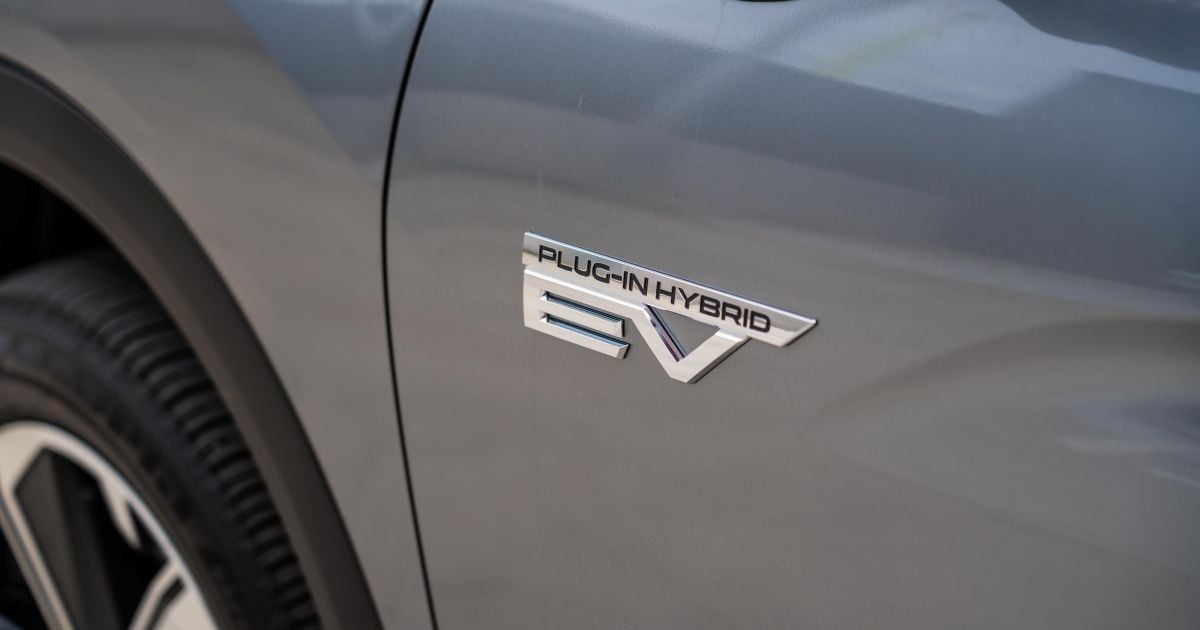
Leave a Comment